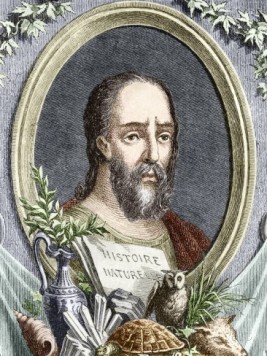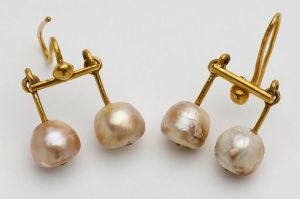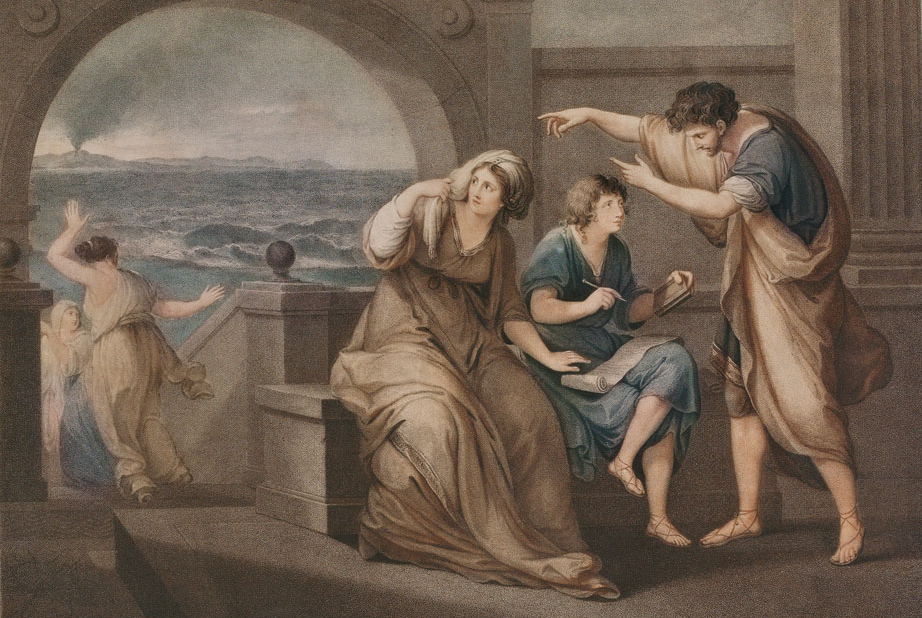 Over the course of human history, many famous and illustrious minds have been drawn in by the hypnotic allure of diamonds. Something in the sparkle of this April birthstone just casts an irreversible spell over the imagination, regardless of social station or place in time…But before Kim and Kanye ever showed off their 15 carats of commitment, before Elizabeth Taylor decided “big girls need big diamonds,” and before they were Marilyn’s best friend, there was Pliny the Elder.
Over the course of human history, many famous and illustrious minds have been drawn in by the hypnotic allure of diamonds. Something in the sparkle of this April birthstone just casts an irreversible spell over the imagination, regardless of social station or place in time…But before Kim and Kanye ever showed off their 15 carats of commitment, before Elizabeth Taylor decided “big girls need big diamonds,” and before they were Marilyn’s best friend, there was Pliny the Elder.
Though perhaps not as flashy as some of today’s divas this ancient Roman scholar was not shy when it came to demanding some diamonds. A man of stunning intellect, his nephew, Pliny the Younger, wrote of him:
“The only time he took from his work was for his bath, and by bath I mean his actual immersion, for while he was being rubbed down and dried he had a book read to him or dictated notes.”
 In fact, during his lifetime, the elder Pliny set about the task of describing no less than the entire known natural universe. His writings, known as the “Naturalis Historia,” were the first model for the modern encyclopedia.
In fact, during his lifetime, the elder Pliny set about the task of describing no less than the entire known natural universe. His writings, known as the “Naturalis Historia,” were the first model for the modern encyclopedia.
Fortunately for us, is not necessary to leaf through all 37 volumes of his epically-proportioned tome to see that, just like the fashionistas of today, the diamond’s mischievous sparkle was just as potent to the mind of this erudite scholar. In his 37th and final volume, he introduced diamonds as the Jupiter of all gemstones:
“Diamond is the most valuable, not only of precious stones, but of all things in this world.”
In a glowing, and even overexaggerated account, Pliny goes on to proclaim that:
“All these stones can be tested upon the anvil and they repel blows so that an iron hammer head may be split into two and even the anvil unseated. Indeed the hardness of the diamond is not able to be described.”
 Following all this praise of diamond, it comes as almost a surprise that he went on to heap disdain on those who dared to dress themselves in what he considered too many gems. Whether intentional or not, his contempt for the Roman “excess” in fashion can even border on the humorous, in such accounts as that of his description of the affect pearls had on the ladies of the empire:
Following all this praise of diamond, it comes as almost a surprise that he went on to heap disdain on those who dared to dress themselves in what he considered too many gems. Whether intentional or not, his contempt for the Roman “excess” in fashion can even border on the humorous, in such accounts as that of his description of the affect pearls had on the ladies of the empire:
“Our ladies quite glory in having these suspended from their fingers, or two or three of them dangling from their ears. For the purpose of ministering to these luxurious tastes, there are various names and wearisome refinements which have been devised by profuseness and prodigality; for after inventing these ear-rings, they have given them the name of ‘crotalia,’ or castanet pendants, as though quite delighted even with the rattling of the pearls as they knock against each other!”
Unfortunately, in the great eruption of Mount Vesuvius of Pompeii, this great mind met his untimely end. There the younger Pliny took up the torch of historian, and is the only remaining source today of the great tragedy which struck Pompeii. He described the characteristic virtue and boldness of his uncle in this final description, in which Pliny decided to rush into danger’s way to respond to the plea of a friend:
“He changed his plans, and what he had begun in a spirit of inquiry he completed as a hero…Happy are they, in my opinion, to whom it is given either to do something worth writing about, or to write something worth reading; most happy, of course, those who do both. With his own books and yours, my uncle will be counted among the latter.” (Pliny, to Tacitus)




You must be logged in to post a comment.